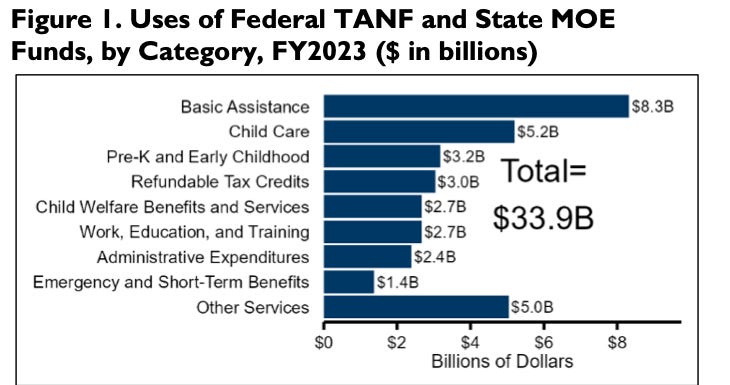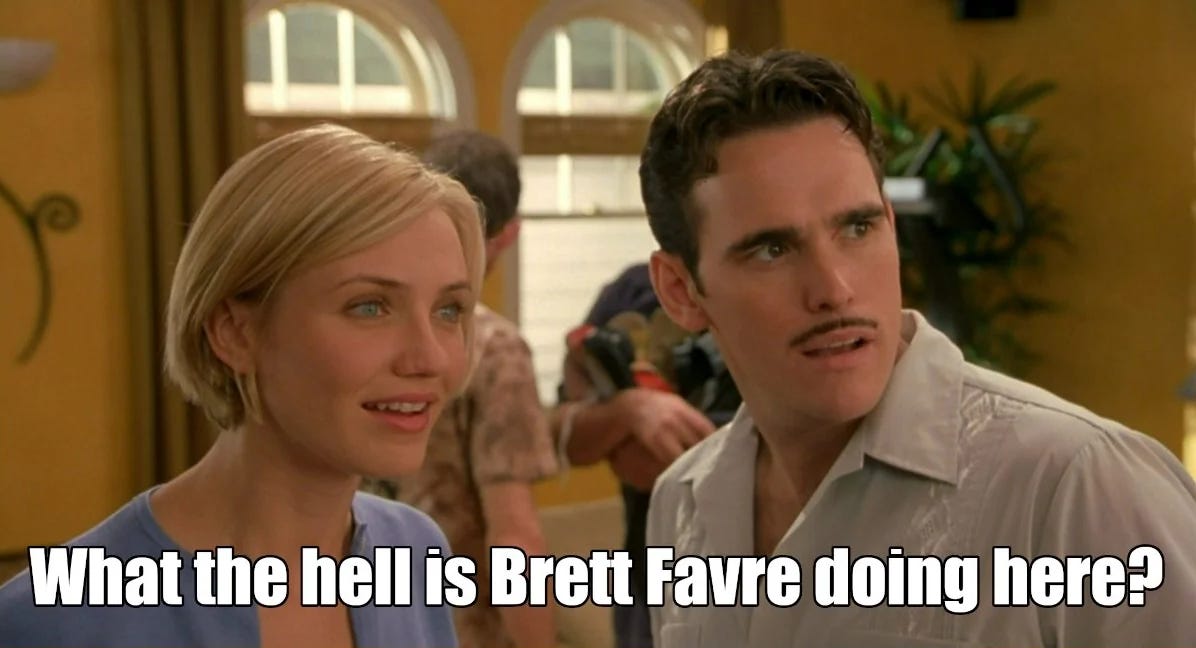Temporary Assistance for Needy Families
The Congressional Research Service (CRS) has a great comprehensive report on Temporary Assistance for Needy Families (TANF). There is also an excellent podcast series on its origin.1
Comprising ~19% of federal child welfare spending, TANF is a block grant, which is wonk speak for a set pot of funds to states and tribes with requirements and rules.
Total federal TANF funding is $16.5 billion per year. That has not changed since 1996, which means TANF has lost 49 percent of its value to inflation from 1997 to 2024.2
TANF replaced the Aid to Families with Dependent Children (AFDC) program, shifting from an open-ended entitlement program to a block grant.
States also have a Maintenance of Effort (MOE) requirement. This is wonk-speak for ensuring states don’t cut their spending and replace it with federal funds.
TANF funds anything “reasonably calculated” to achieve its four statutory purposes:
Provide assistance to needy families so that children may be cared for in their own homes or in the homes of relatives;
End the dependence of needy parents on government benefits by promoting job preparation, work, and marriage;
Prevent and reduce the incidence of out-of-wedlock pregnancies; and
Encourage the formation and maintenance of two-parent families.
This figure from CRS shows combined federal and state TANF funding by topic:
Often, TANF is synonymous with “welfare”. Many wonks are then surprised to learn that only ~20% of TANF goes to direct cash assistance.3
TANF has lots of rules for cash assistance, including that it is:
Only for families with a dependent child;
Limited to five years; and
Subject to state-set maximum benefits, ranging from:
$915 in New Hampshire; to
$162 in Arkansas in 2022.
TANF also has a “child only” benefit that does not look at caregiver income, often used to support children in kinship care. Nearly half of TANF cases are “child only”.4
TANF also has work requirements, tied to performance standard for states, using the wonktacularly named minimum work participation rate (WPR).
Since you noticed that there are many categories of activities within TANF, you likely have surmised that it covers many things that are… not what you would expect.
To illustrate that breadth and the risks it raises, we have a football-related example.
Warning- it’s little older than last night’s big game. So much so that, much like Matt Dillon, you may find yourself asking Cameron Diaz, hang on…
If you haven’t yet heard this Mississippi TANF story, it centers on over $90 million in TANF funds from 2016 to 2019 that went to some… questionable purposes.
This included $1 million in speaker fees to Favre (for events he did not attend…) and $5 million to build a volleyball stadium at the university his daughter was attending.
You can see more from this September 2024 hearing with Brett Favre himself. This issue is not unique; these kinds of uses are often permissible under the four purposes.
In addition, this January 2025 GAO report discusses fraud in TANF, highlighting the program’s vulnerabilities to misuse and offering recommendations to fix them.
However, none of this is to say that TANF is frivolous. To the contrary, you can see just how central it is to child welfare funding.
TANF and Child Welfare
ChildTrends has a great brief specific to TANF from its most recent Child Welfare Financing Survey.
From that we know that states spent ~$2.6 billion in TANF funds on child welfare services in State Fiscal Year 2020.
Some of the things TANF can fund that have relevance to child welfare policy are:
Economic support to relative caregivers not in the formal child welfare system;
Payments for kinship care and adoption/guardianship assistance;
Foster care payments, particularly for non IV-E eligible children;
Child Welfare Services, including:
Family preservation;
Adoption services;
Legal support;
Transportation; and
Independent living.
Much more!
States can also transfer up to 10% of their TANF funds to SSBG, for even more flexible uses, many of which overlap with child welfare.
Learn More About TANF
As you can see, TANF has a broad array of uses related to child welfare policy, and it remains a key tool states use in their work
And you can accompany it with jams from the Work Makes the Difference album that a local TANF office made to celebrate the dignity of work…
See this CRS report
Again, see this CRS report
See the most recent relevant HHS report





